How big are solar prominences as compared to the Earth? What is their usual shape?
The Moon is the only natural and permanent satellite of World. Some planets have two moons, like Mars , others have tens of moons, such every bit Jupiter , while the planet with the most moons is Saturn , which has 82 moons.
Moons vary in size, shape, and composition, and our Moon is in the acme 10 listing of the biggest satellites in our Solar System . How big is the Moon?
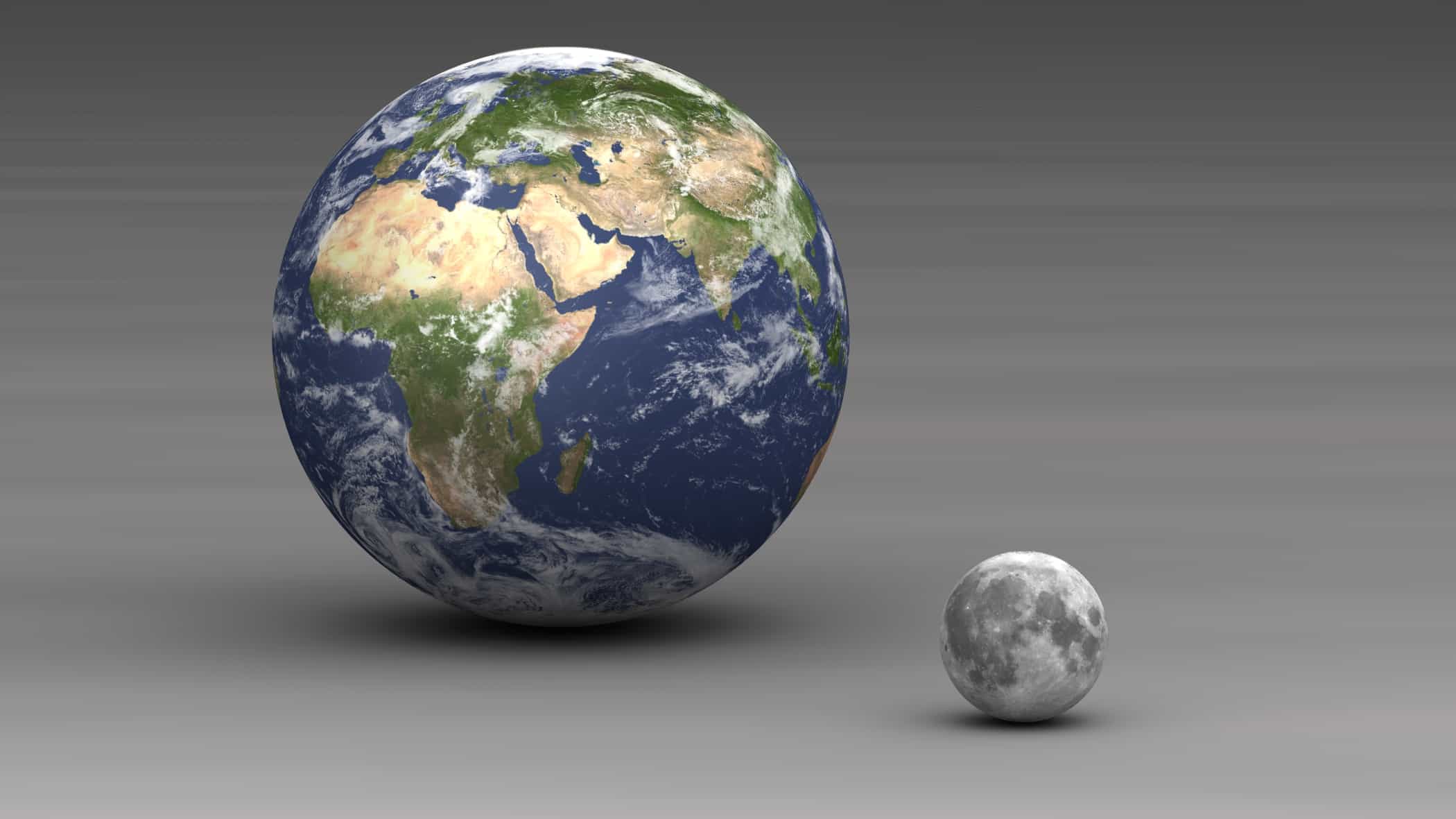
Our Moon has a mean radius of 1,737 kilometers / 1,079 miles, while its polar radius is 1,736 km / 1,078 mi, and its equatorial radius is 1,738 km / ane,079 mi. The Moon'due south diameter is 3,474 km / 2,158 mi, and information technology is the biggest Moon in the Solar Organization relative to the size of its planet.
When it comes to other satellites, the Moon is the fifth largest satellite in the Solar System. So permit's take a expect at the acme 10 biggest moons in the Solar System.
Summit 10 Biggest Moons in the Solar Organisation
The top 10 biggest moons in our Solar System are genuinely gigantic, with some of them being even bigger than some of the Solar Arrangement's planets, like Mercury , or they make dwarf planets such as Pluto , Eris , Haumea , Makemake , or Ceres , look small-scale.
| Top 10 Biggest Moons in the Solar System | |||
| #Rank | Radius | Diameter | Parent Planet |
| 1.Ganymede | two,634 km / 1,636 mi | 5,268 km / 3,273 mi | Jupiter |
| 2.Titan | 2,574 km / 1,599 mi | v,149 km / 3,199 mi | Saturn |
| 3.Callisto | two,410 km / one,497 mi | four,820 km / 2,995 mi | Jupiter |
| 4.Io | 1,821 km / 1,131 mi | 3,643 km / 2,263 mi | Jupiter |
| 5.Moon (Luna) | 1,737 km / 1,079 mi | 3,474 km / 2,158 mi | Earth |
| 6.Europa | one,560 km / 969 mi | 3,121 km / 1,939 mi | Jupiter |
| seven.Triton | i,353 km / 840 mi | two,706 km / ane,681 mi | Neptune |
| 8.Titania | 788 km / 489 mi | 1,576 km / 979 mi | Uranus |
| 9. Rhea | 763 km / 474 mi | 1,527 km / 948 mi | Saturn |
| 10. Oberon | 761 km / 472 mi | 1,522 km / 945 mi | Uranus |
As, such the top ten biggest moons in the Solar System are Ganymede, Titan, Callisto, Io, Luna (Moon), Europa, Triton, Titania, Rhea, and Oberon.
Four of the biggest moons in our Solar System belong to the biggest planet in our Solar System, namely Jupiter. Those moons are Ganymede, Callisto, Io, and Europa.
Ganymede is the biggest moon in the Solar Organization, bigger than the planet Mercury and all the dwarf planets. At the aforementioned time, Io, Callisto, and Europa are smaller than Mercury but more than prominent than all the dwarf planets.
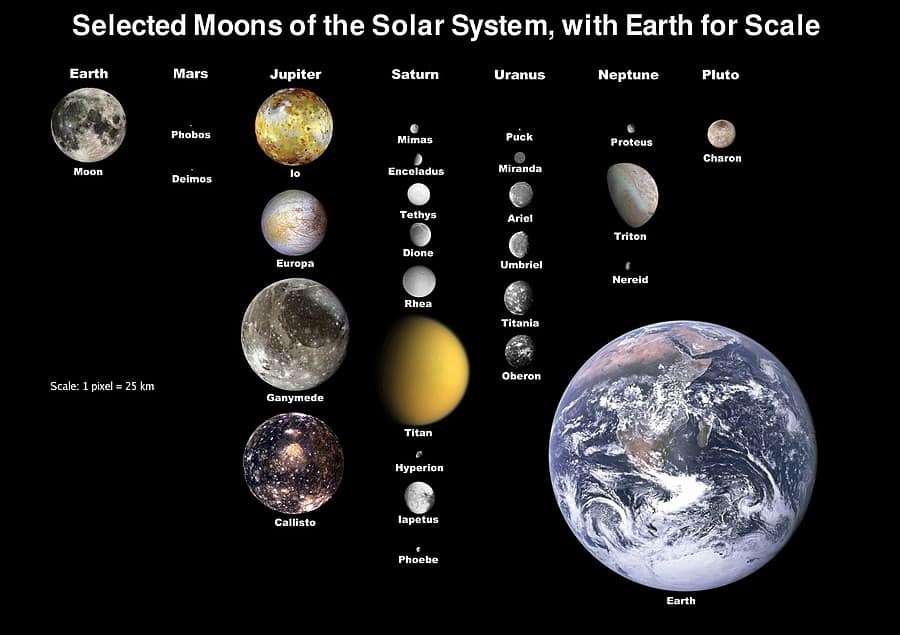
Out of the remaining half-dozen, ii of the biggest moons in the Solar System belong to Saturn, the 2d biggest planet in the Solar System, and they are Titan and Rhea.
Titan, like its parent planet, as well ranks in the 2nd place, being the 2 nd biggest moon in the Solar Arrangement. Information technology is also bigger than Mercury and all the other dwarf planets. Rhea, on the other hand, is bigger only than the dwarf planets Makemake and Ceres.
Out of the remaining four biggest moons in the Solar Organisation, two belong to the ice giant Uranus, namely Titania and Oberon. Titania is smaller than Pluto only bigger than Haumea, Makemake, and Ceres. Oberon is bigger only than Makemake and Ceres.
The last two of the biggest moons in our Solar System are Earth'south Moon and Neptune's moon Triton. Our Moon is bigger than Europa, and the dwarf planets Pluto, Eris, Haumea, Makemake, and Ceres. Triton is also bigger than all the dwarf planets.
How Big is the Moon in Comparing to World?
How does the Moon compare to Globe? Our Moon'southward diameter is more than a quarter of Earth's diameter, while its mass is 1/81 that of Globe'southward. It basically weighs 80 times less than our Earth. The Moon's radius is just 27% of our Earth's radius. If our Earth were hollow, it would take around fifty Moons to fill it.
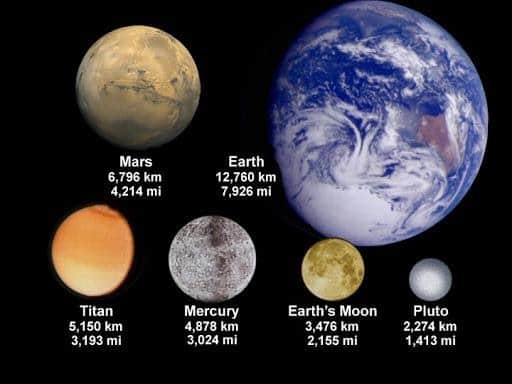
How Big is the Moon in Comparison to the United States?
The United states is 4,506 km / two,800 mi wide when measured horizontally from the eastern seaboard to the west coast – West Quoddy Head in the east to the Point Arena in the West. Thus the Moon is smaller in bore than the United States, nonetheless.

The United States is ii,545 km / i,582 mi from due north to southward, and thus, the Moon is smaller beyond than the United states is wide.
Is the Moon the Size of Texas?
The state of Texas, from its farthest point E to Westward, is about 1,239 km / 770 mi. The diameter of our Moon is far greater, at 3,474 km / 2,158 mi; thus, the Moon is 2.eight times bigger than the state of Texas.
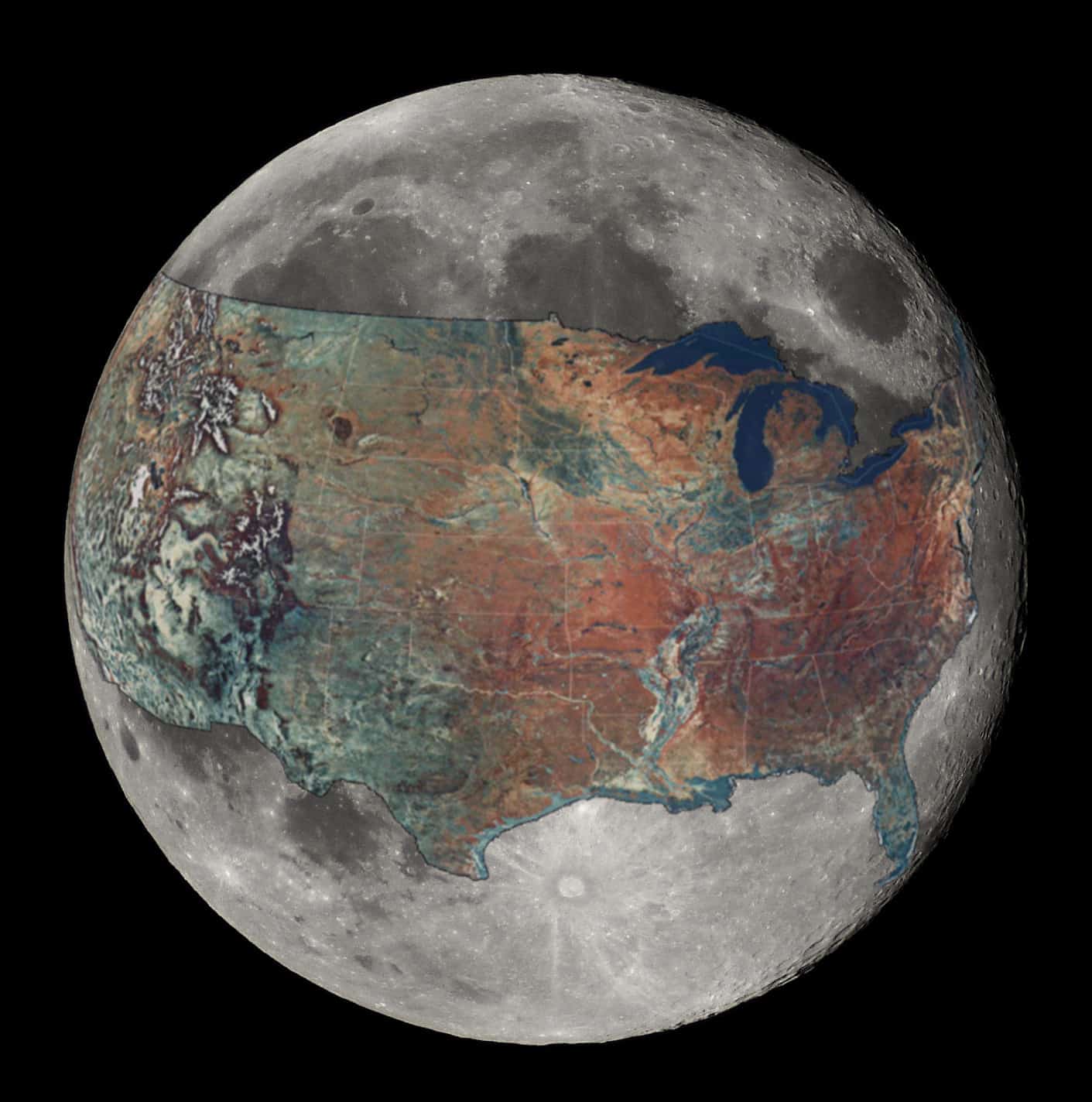
What if the Moon was Twice as Large?
If the Moon would exist twice as big, then solar eclipses would be even more mutual. The path of totality would be significantly wider, perchance over 3,600 km / ii,000 mi – the wideness of the Moon's umbra. Totality would last much longer, peradventure more than than an hr.
During totality, the sky would exist much darker than before, and annular solar eclipse would cease to exist. Tides would be significantly larger on our Earth, but this assumes the Moon would have the same mass. If information technology didn't, and so it is highly possible that it would collide with our Globe.
Is Russia Wider than the Moon?
The surface area of the Moon is equivalent to the expanse of Russian federation, the United States, and Canada combined. In terms of wideness, Russian federation has an east-west extent of effectually 9,000 km / 5,600 mi, and a northward-s width of two,500 to 4,000 km / 1,500 to 2,500 mi.
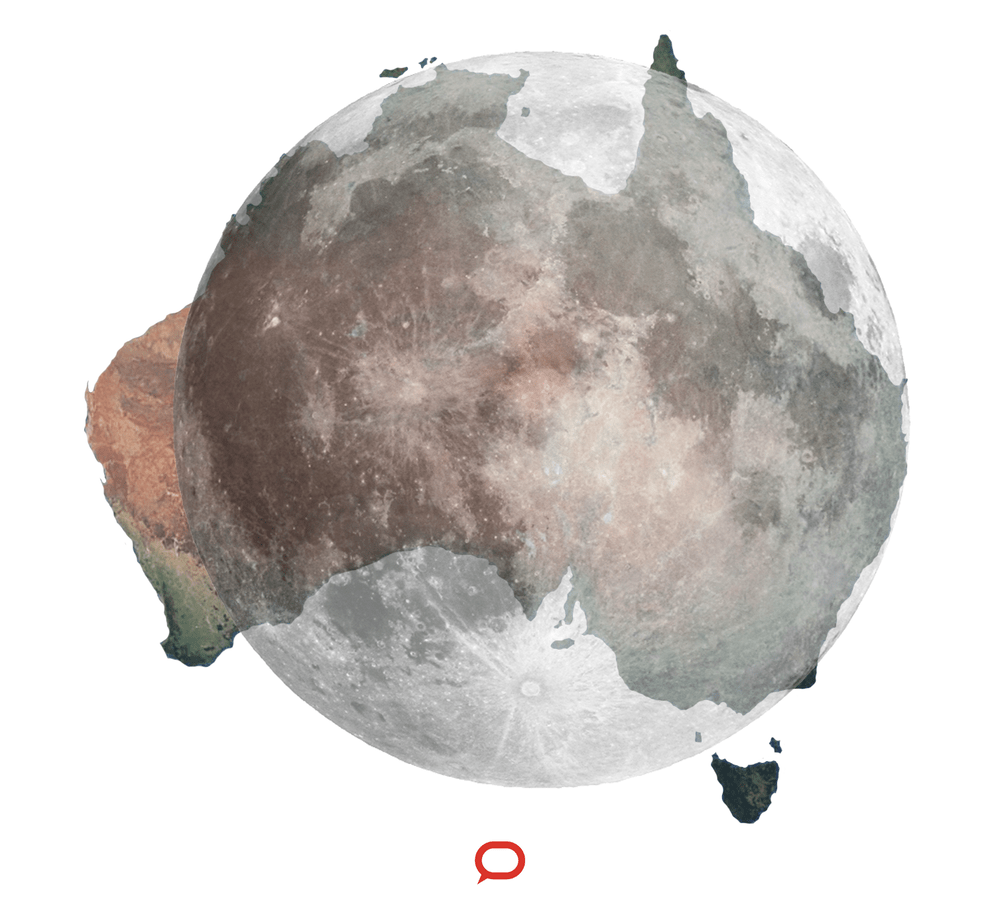
This means that Russian federation is wider than the Moon when compared from the due east-due west extent, just smaller in the north-south width.
How Long Would Information technology Take to Walk Effectually the Moon?
If y'all could walk continuously at a speed of 3.1 mph, you lot could walk around the Moon in around 91 days / 2,188 hours. However, if we were to talk realistically, and include rests, slumber, eating time, flat levelness, and other things, it would probably accept you lot around a year or less to walk around the Moon once.
How Many Moons Can Fit in the Sun?
The Sun is gigantic, and if it were hollow, y'all could fill information technology with around 64.3 million Earth moons. If y'all could make full it with Globe-sized planets, you would need well-nigh one.3 million Earths.
The Sun has a radius of 696.340 km / 432.685 mi and a diameter of 1.39 million km / 864.000 mi. It is 330,000 times more massive than Earth.
Did you know?
- The largest moon in the Solar System, namely Ganymede, has a diameter of around ane.51 times that of our Moons.
- The Moon is located at virtually 384,400 kilometers / 238,855 miles away from Earth , or 1.29 light-seconds.
- The Moon is 384,400,000 meters away from us, while in inches, the Moon is 15.thirteen billion inches away from Earth
- The Moon can get as far as 406,700 km / 252,711 mi abroad from Earth – apogee – and as close as 356,400 km / 221,456 mi away – perigee.
- On average, it would take you around three days to get to the Moon.
- The first human-crewed spacecraft to be sent to the Moon, the Apollo 11, arrived in just 51 hours and 49 minutes to the Moon.
- The slowest mission, which involved a trip to the Moon, was ESA's SMART-one. The lunar probe reached the Moon in 1 yr, ane month, and 2 weeks. This slow trip was intentional, equally the probe used an ion engine as a propellant, using simply 82 kg of xenon for the entire mission.
- The Luna i probe traveled at around ten,500 km/hr, and it reached the Moon in just 36 hours. The probe completed a flyby of the Moon, and it was launched in 1959.
- The Moon is 8.20 lite minutes abroad, or 500 calorie-free-seconds away from the Sun.
- If the Moon were to disappear, it would take united states of america one.29 seconds to realize this.
Sources:
- Wikipedia
- NASA
- Space
- Theconversation
Image Sources:
- https://upload.wikimedia.org/wikipedia/commons/4/48/Earth_moon_size_comparison.jpg
- https://upload.wikimedia.org/wikipedia/commons/thumb/4/4f/Moons_of_solar_system_v7.jpg/900px-Moons_of_solar_system_v7.jpg
- https://blogger.googleusercontent.com/img/proxy/AVvXsEhlmKq-qWZzzTWsxX3FOBH-BSOfvFEnNpCYGPbY9T2eLK37QM8MgxjTHbspDDc7qbLRlUYjyXA9Il2Czlne5gFpegDI3ycVDQGn_TkZWlGpFWiipZ4tHIxCcea8NBqCKI7pxX17UCZdOFnEy2B9-Ol5DnSj3c48OX8gS5Uqu_i1CB_uaXHI8Inr6RcgAIGD3rs=
- https://i.redd.it/4w56n8c5efb11.jpg
- https://i.imgur.com/yl7v7Bd.jpg
- https://images.theconversation.com/files/284051/original/file-20190715-173360-1nn1to4.png?ixlib=rb-1.1.0&q=45&auto=format&due west=g&fit=clip
birminghamstruity.blogspot.com
Source: https://nineplanets.org/questions/how-big-is-the-moon/
0 Response to "How big are solar prominences as compared to the Earth? What is their usual shape?"
Post a Comment